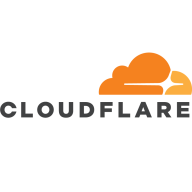


Kemp LoadMaster and Microsoft Azure Application Gateway are both key players in the load balancing market, with Kemp LoadMaster having an advantage in pricing and support.
Features: Kemp LoadMaster offers ease of use with ready-made templates and stable deployment options, making it a practical choice for straightforward setups. Its geo-redundancy and capability to support crucial Microsoft applications like Exchange, Lync, and SharePoint are significant advantages. The integrated security features, including WAF and IPS, enhance its overall value. Microsoft Azure Application Gateway's strengths lie in its cloud-native features, automatic scaling, and advanced WAF options, with seamless integration into other Microsoft services, making it suitable for Azure-centric businesses.
Room for Improvement: Kemp LoadMaster users suggest enhancements in its GUI, SNMP and RESTCONF management, and advanced logging features. There is also a call for more comprehensive documentation and broader support for business applications. Microsoft Azure Application Gateway could benefit from improved configuration flexibility, scalability, and support for protocols beyond HTTP/HTTPS. Customers also seek more competitive pricing models, enhanced security features, and better integration with Service Mesh and Disaster Recovery options.
Ease of Deployment and Customer Service: Kemp LoadMaster is known for providing reliable support with quick response times and is commonly used in on-premises and private cloud environments. Microsoft Azure Application Gateway, being a primarily cloud-based solution, is best suited for public and hybrid cloud deployments, offering decent support but sometimes lacking the hands-on assistance available with Kemp.
Pricing and ROI: Kemp LoadMaster is celebrated for its competitive pricing, high ROI due to simplicity and stability, and accessible evaluation through free trials and flexible licensing. Microsoft Azure Application Gateway's pay-as-you-go model can be cost-effective for scalable demands, but the varied pricing based on usage can lead to higher cumulative costs.
WordPress security can be tricky, and that's where Cloudflare can be absolutely helpful for small businesses.
For the small project I was working on, using the basic tier provided a huge improvement at zero cost.
Microsoft Azure Application Gateway significantly impacts our cost savings while maintaining higher performance.
We have seen a return on investment in terms of time-saving and cost-saving by not creating our own infrastructure.
This would help us address issues promptly, especially during unforeseen events like DDoS attacks.
Cloudflare does not offer hands-on technical support to fix customer problems but rather a self-service model.
The key factor is the language in which the support is offered, which, in this case, is in Thai.
We have not received technical support from Kemp LoadMaster without a license.
There is room for improvement, specifically in paid support, by providing more direct contact.
I would rate Microsoft support as good because they have a very skilled technical support team in the background
It is a SaaS tool, but the fact that they have workloads deployed across the world proves that it is a highly scalable tool.
The tool offers very good performance, even during high-traffic periods.
I rate the solution’s scalability an eight out of ten.
Kemp LoadMaster is a scalable solution.
Microsoft Azure Application Gateway is a very scalable product.
Microsoft Azure Application Gateway is a scalable solution.
For DDoS protection, I would not recommend Cloudflare.
I rate the solution’s stability an eight out of ten.
The service is very stable with no impacts during high-traffic periods.
With the license purchase afterwards, if it expires, it begins dropping the HTTP traffic, also the DNS traffic.
The stability is good, and except for a few instances, I don't see the non-availability of Azure Cloud services.
There's a need for improvement in areas like AI-based DDoS attacks and Layer 7 WAF features.
Despite these challenges, overall, Cloudflare remains the preferred solution compared to Azure, AWS CloudFront, and Google Cloud Armor.
The timing aspect can lead to it being considered overpriced. This is a particular concern we have with Cloudflare, as they may struggle with accurately detecting the client.
After that, they said if it was good, we could purchase the license, and while we found it very good, the license cost was too high.
There is room for improvement in terms of support, such as assigning agents directly for more straightforward engagement.
In future releases of Microsoft Azure Application Gateway, I would like to see more AI functionalities and a better dashboard as well as some customizations.
Microsoft Azure Application Gateway has room for improvement because it offers many features, but its configuration is a bit difficult, at least from the developer point of view.
That's where Cloudflare shines for smaller businesses – it's ten times cheaper than Akamai.
I find it to be cheap.
I think they should consider reevaluating the pricing for support, as it can be quite high.
Azure solutions are quite expensive.
When it comes to pricing for Microsoft Azure Application Gateway, I would rate it a seven out of ten.
The most valuable features of the solution are performance and security.
Techniques like minification and image compression reduce the size of assets, leading to better performance and faster user load times.
The solution has been able to compare it to the market, and I think the product has taken great strides in automating quite a bit of things, and they use a lot of AI.
We had some issues in patching management, so we deployed this product for virtual patching, the IPS rule, and it gives us very good results because we have very critical servers.
We are using it for some of the security features for our applications, particularly for securing traffic in transit with SSL.
The Web Application Firewall (WAF) in Microsoft Azure Application Gateway has been very effective in protecting applications from security threats.
The gateway's Web Application Firewall feature enhances security as it is the first entry point to your network from the outside world.



| Company Size | Count |
|---|---|
| Small Business | 45 |
| Midsize Enterprise | 8 |
| Large Enterprise | 25 |
| Company Size | Count |
|---|---|
| Small Business | 24 |
| Midsize Enterprise | 13 |
| Large Enterprise | 16 |
| Company Size | Count |
|---|---|
| Small Business | 22 |
| Midsize Enterprise | 6 |
| Large Enterprise | 23 |
Cloudflare is a highly-regarded Content Delivery Network (CDN) and a Distributed Denial-of-Service (DDoS) protection solution. The robust global connectivity cloud platform that is Cloudflare ensures users are able to connect to the Internet quickly, securely, and reliably. Cloudflare is one of the world's largest networks in the marketplace today. Using Cloudflare, businesses, educational entities, NGOs, vloggers, bloggers, and anyone else with an internet presence can experience more secure, faster websites and applications.
Currently, there are millions of Internet locations on Cloudflare, and the Cloudflare network
continues to grow every day by the thousands. The solution is able to fulfill the requests for
millions of websites seamlessly and serves on average 45 million HTTP requests per second.
Cloudflare has safe, secure data centers in close to 300 cities worldwide to ensure every
client request is filled as quickly as possible. It is Cloudflare’s edge network that makes this
possible by keeping content and other services as close to each client as possible, so the
information requests are always only seconds away.
Many organizations that work in democracy, civil society, human rights, or the arts are able to
access Cloudflare's highest levels of protection for free via Project Galileo. Additionally, official
election websites can be secured from hacking and fraud through Cloudflare’s Project
Athenian, also at no additional cost.
Cloudflare can also help organizations of all sizes develop a robust zero-trust strategy to
ensure the highest levels of productivity and profitability. Employees, stakeholders, and end users have a greater level of satisfaction and overall improved user experience, which can, in
turn, result in higher revenues and overall ROI. Zero-trust and BYOD (bring your own device)
access ensure end users and employees always have the best resources and technology
available to them at all times.
Cloudflare benefits
Cloudflare has many benefits. Some of its most valuable benefits include:
- Faster load times
- Robust DNS security
- Intuitive cloud Web Application Firewall (WAF)
- Free universal SSL
- Image enhancement
- Automatic browser caching
- Next-generation cloud load balancer
- Accelerated Mobile Pages (AMP)
- Rate limiting
- Minification
- Zero-trust capabilities
- Cost-effective
- Reduced carbon footprint
Reviews from real users
“Many websites require an SSL certificate because they sell stuff and want SSL. Cloudflare
comes with an SSL certificate built in. It's automatic. You sign yourself up for Cloudflare, and
an SSL certificate automatically protects your website. If you have a connection between your
website and your host, the server, Cloudflare, and the host, you don't necessarily need a
certificate.” Spencer M., Owner at Tech Exchange
“What I like best about Cloudflare is that my company can use it to trace and manage
applications and monitor traffic. The solution tells you if there's a spike in traffic. Cloudflare
also sends you a link to check your equipment and deployment and track it through peering,
so it's a valuable tool.” Daniel P., Network Engineer at Ufinet
“The most valuable feature of Cloudflare is the GUI. You are able to control the solution very
well through the interface. There is a lot of functionality that is embedded in the service.” PeerSpot user, Competence Center Manager at a tech services company
Kemp LoadMaster is a powerful load balancing solution that also serves as a web application firewall. Its primary use case is load balancing and application load balancing, making it an ideal solution for organizations that must distribute traffic across multiple servers. Kemp's integration with an active directory for ESP usage, hosting/deployment of SSL certificates, and pricing are some of its most valuable features.
Using Kemp has helped organizations mitigate cross-scripting vulnerabilities, cookie-related issues, and content security policy issues. It has also allowed them to handle everything with Kemp instead of working on each application individually.
Azure Application Gateway is a web traffic load balancer that enables you to manage traffic to your web applications. Traditional load balancers operate at the transport layer (OSI layer 4 - TCP and UDP) and route traffic based on source IP address and port, to a destination IP address and port.
To learn more about our solution, ask questions, and share feedback, join our Microsoft Security, Compliance and Identity Community.
We monitor all Application Delivery Controllers (ADC) reviews to prevent fraudulent reviews and keep review quality high. We do not post reviews by company employees or direct competitors. We validate each review for authenticity via cross-reference with LinkedIn, and personal follow-up with the reviewer when necessary.